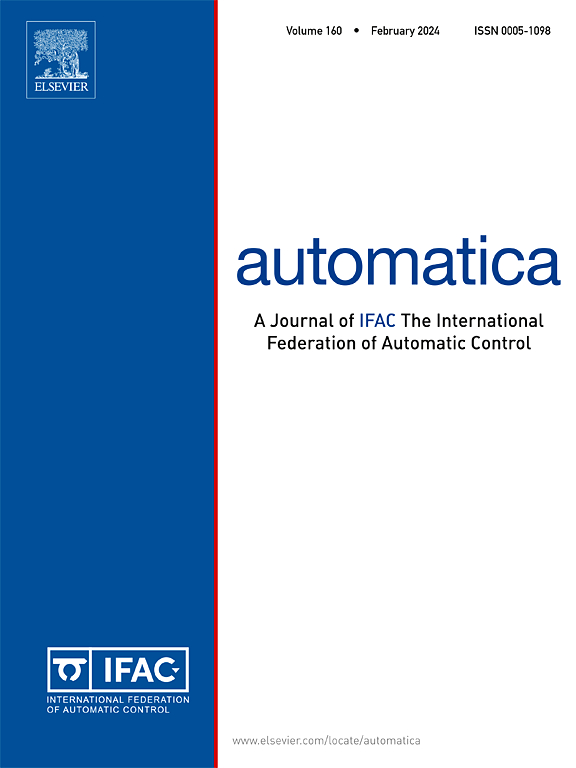多后卫夺旗游戏与凸目标区域
IF 5.9
2区 计算机科学
Q1 AUTOMATION & CONTROL SYSTEMS
引用次数: 0
摘要
本研究解决了具有一般凸目标区域和多个防御者的夺旗游戏,一种具有两个目标区域的特殊类型的到达避免游戏,其中攻击者的目标是首先到达旗帜区域,然后到达返回区域,而不被一组防御者捕获。游戏过程可以分为两个阶段:攻击者到达标志区域之前和之后。我们以递归的方式处理这两个博弈阶段,通过优化问题来表征博弈的价值。建立了第二博弈阶段的值等于一个凸优化问题的最优值,整体夺旗博弈的值等于一个拟凸优化问题的最优值。我们证明了当夺旗博弈的值大于第二博弈阶段的值时,拟凸优化问题具有唯一的最小点。此外,我们证明了保证博弈值的最大防御者数为2,这对于分配多个防御者捕获多个攻击者是一个有用的结果。最后,我们提出了一种求解拟凸优化问题的迭代算法。本文章由计算机程序翻译,如有差异,请以英文原文为准。
Multi-defender capture-the-flag game with convex target regions
This study addresses the capture-the-flag game with general convex target regions and multiple defenders, a special type of reach-avoid games with two target regions wherein an attacker aims to first reach the flag region and next the return region without being captured by a team of defenders. The game process can be divided into two phases: before the attacker reaches the flag region and after. We handle the two game phases in a recursive manner to characterize the value of the game through optimization problems. We establish that the value of the second game phase equals the optimal value of a convex optimization problem, and the value of the overall capture-the-flag game equals the optimal value of a quasi-convex optimization problem. We demonstrate that the quasi-convex optimization problem has a unique minimum point when the value of the capture-the-flag game is larger than that of the second game phase. Furthermore, we prove that the maximum number of defenders ensuring the game value is two, which is a useful result for assigning multiple defenders to capture multiple attackers. Finally, we propose an iterative algorithm to solve the quasi-convex optimization problem.
求助全文
通过发布文献求助,成功后即可免费获取论文全文。
去求助
来源期刊

Automatica
工程技术-工程:电子与电气
CiteScore
10.70
自引率
7.80%
发文量
617
审稿时长
5 months
期刊介绍:
Automatica is a leading archival publication in the field of systems and control. The field encompasses today a broad set of areas and topics, and is thriving not only within itself but also in terms of its impact on other fields, such as communications, computers, biology, energy and economics. Since its inception in 1963, Automatica has kept abreast with the evolution of the field over the years, and has emerged as a leading publication driving the trends in the field.
After being founded in 1963, Automatica became a journal of the International Federation of Automatic Control (IFAC) in 1969. It features a characteristic blend of theoretical and applied papers of archival, lasting value, reporting cutting edge research results by authors across the globe. It features articles in distinct categories, including regular, brief and survey papers, technical communiqués, correspondence items, as well as reviews on published books of interest to the readership. It occasionally publishes special issues on emerging new topics or established mature topics of interest to a broad audience.
Automatica solicits original high-quality contributions in all the categories listed above, and in all areas of systems and control interpreted in a broad sense and evolving constantly. They may be submitted directly to a subject editor or to the Editor-in-Chief if not sure about the subject area. Editorial procedures in place assure careful, fair, and prompt handling of all submitted articles. Accepted papers appear in the journal in the shortest time feasible given production time constraints.
 求助内容:
求助内容: 应助结果提醒方式:
应助结果提醒方式:


